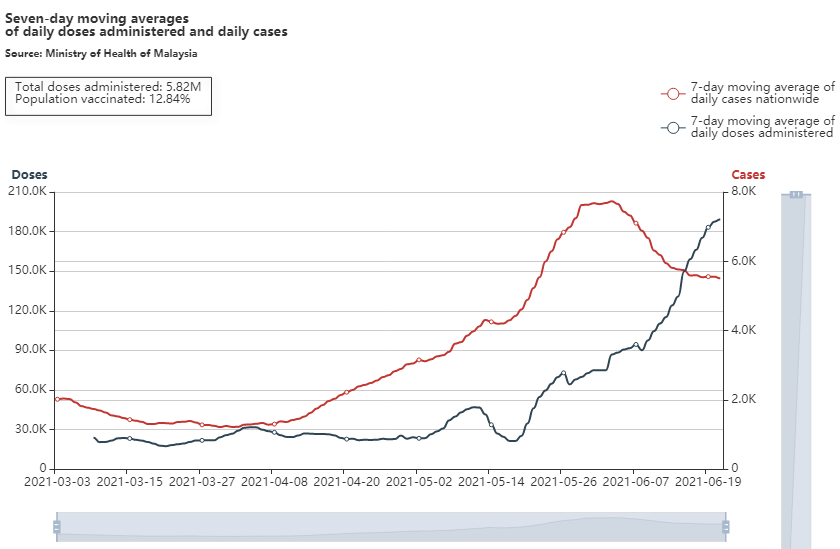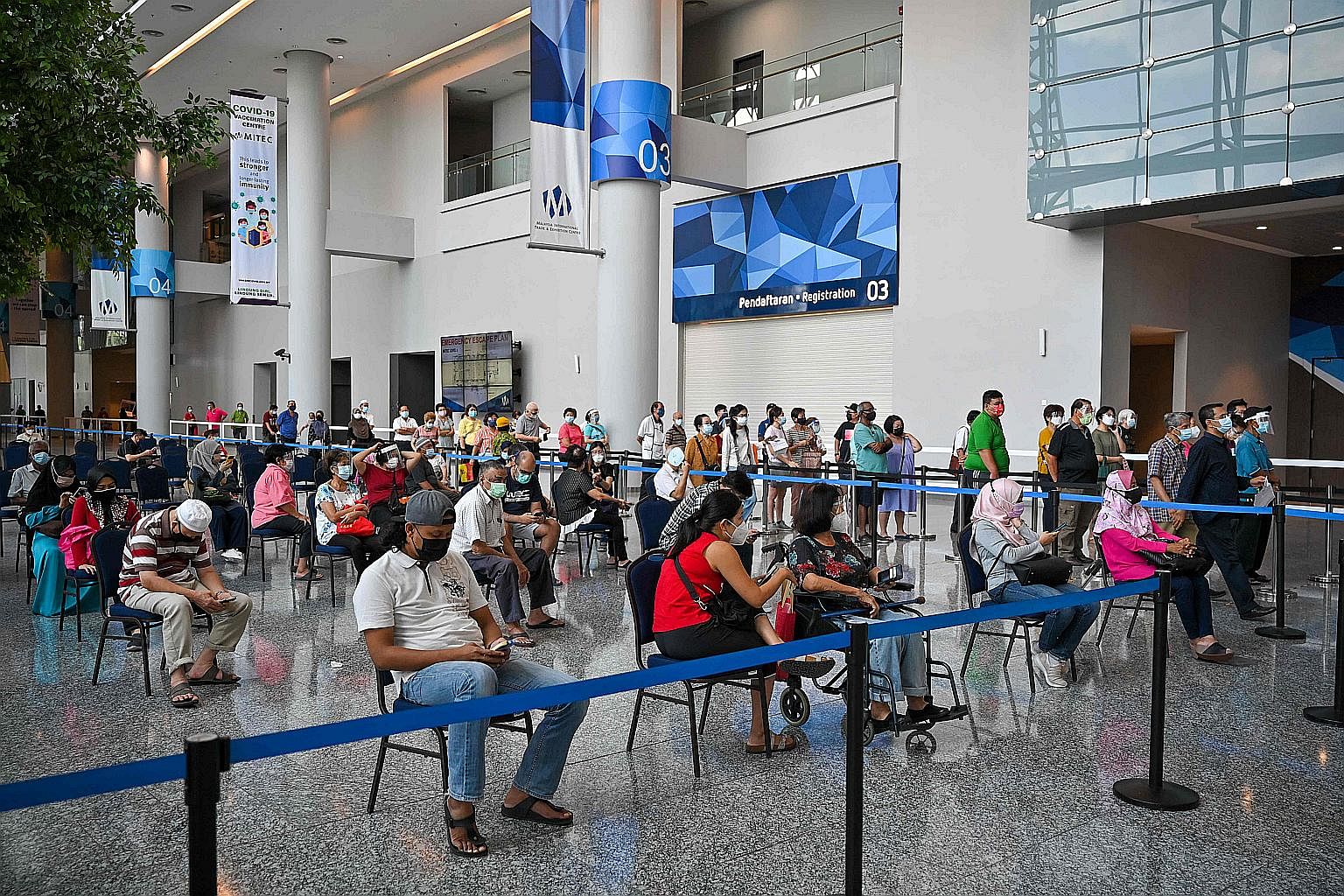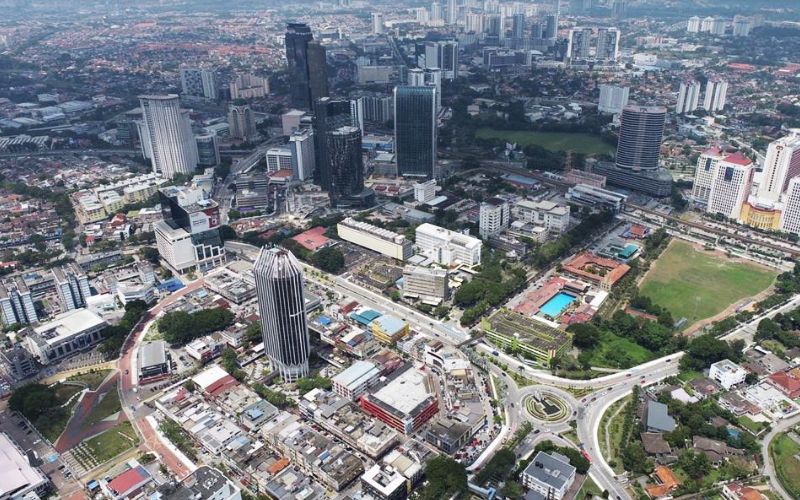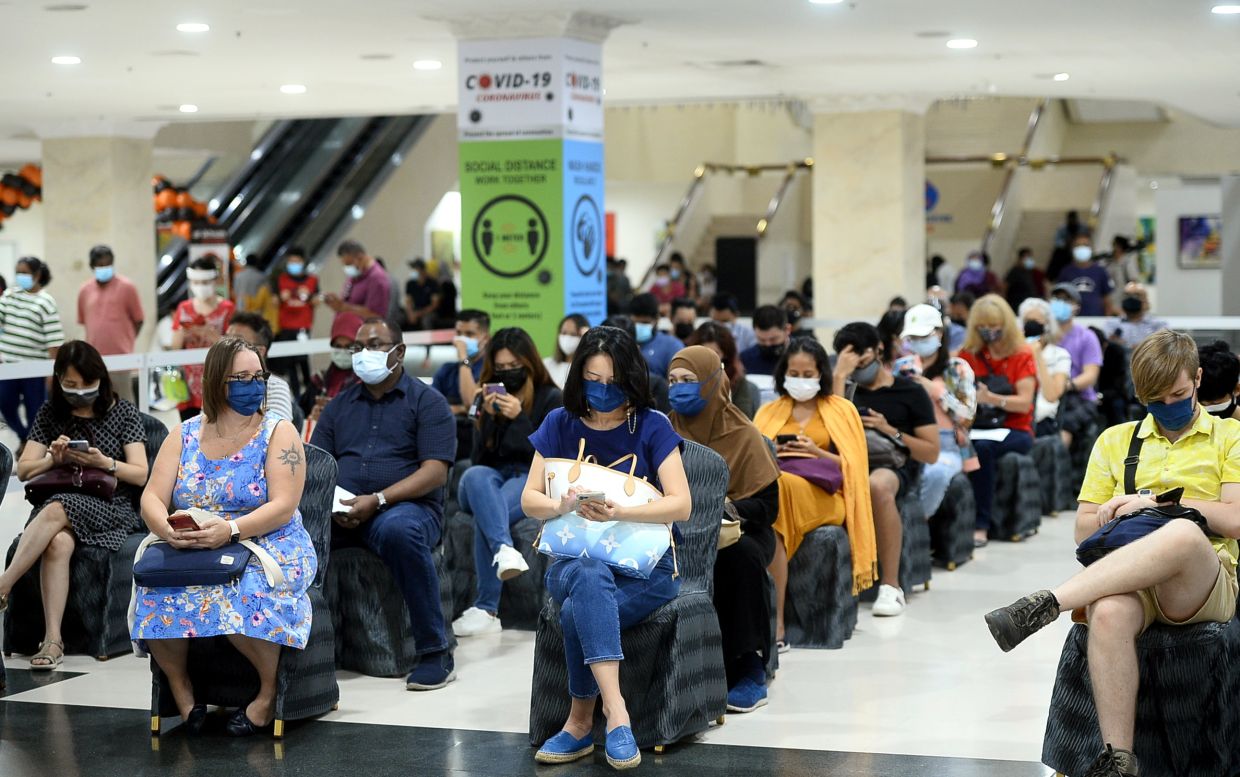Despite getting more than half of all vaccine doses received by Malaysia, Selangor is still the state most plagued by Covid-19 infections. What is the problem?
Editor’s Note (June 24): Additional information now suggests that Malaysia’s Covid-19 Immunisation Task Force, the official body charged with coordinating and reporting the country’s National Immunisation Programme, somehow misreported the number of vaccines received by Selangor. Despite having reported previously that the state received 2,909,670 doses, CITF later revised their report to say that Selangor had, in fact, received only 615,210 doses. The task force stated that the earlier number of over 2.9 million “included both vaccine stocks in government facilities and the distributor’s Selangor-based warehouse, which would be distributed to the whole country.”
Though this may absolve the state to some extent for having only administered some 400,000 doses (per this report), it calls into question why the country’s most populous state – and the one consistently leading Malaysia in new infections – has received such a paltry number of doses to begin with. It’s also worth noting that vaccines aren’t particularly effective when they’re sitting in a warehouse.
Our original report, based on earlier information, follows.
Turns out vaccines don’t do very much good until they’re injected into people’s arms. If you need evidence of this, just look to Malaysia’s most populous state.
By the end of May, just three weeks ago, Selangor had received 2,909,670 vaccine doses from Malaysia’s federal government – quite literally exponentially more than any other state or territory, and more than half of all of the roughly 5.2 million doses received by Malaysia by May 30, according to the Ministry of Science, Technology, and Innovation (MOSTI)
The next-nearest state, Sabah, had received 285,480 doses.
Given Selangor’s population, just that tranche of vaccine doses alone was enough to vaccinate 60 out of ever 100 people over the age of 18 in Selangor, according to MOSTI. (By doses supplied vs population, only Putrajaya – with its relatively minuscule population – had more doses available per 100 people delivered.)

Looking at the chart above, you can see that of Selangor’s nearly 4 million vaccine doses, less than 400,000 were actually administered.
Given that Selangor has for weeks been the epicentre of new cases and deaths in Malaysia, it seriously begs the question: Why have over 2.5 million vaccine doses not been given?
Granted, the data on this chart dates back to May 30, but even now, according to the government’s own figures, Selangor is lagging horribly behind, with only 669,149 people vaccinated as of June 21, representing only 14.09% of the state’s vaccine-eligible population four months after the vaccine programme began.
With the sole exception of Sabah, which has frankly done a similarly poor job of administering the vaccines they’ve received, no other state’s rate of vaccination is lower than Selangor’s – though some are pretty close.
Here is a ranked list of states and territories in Malaysia along with the percentage reached of the targeted vaccination numbers as of June 22:
- Kuala Lumpur (56.16%)
- Putrajaya (50.34%)
- Labuan (39.59%)
- Sarawak (32.68%)
- Perlis (31.84%)
- Negeri Sembilan (17.11%)
- Penang (15.90%)
- Kelantan (15.56%)
- Melaka (15.39%)
- Perak (15.28%)
- Terengganu (15.20%)
- Pahang (14.96%)
- Johor (14.21%)
- Kedah (14.10%)
- Selangor (14.09%)
- Sabah (12.05%)
We’re not sure what it means, but it’s certainly curious that the top three rates of vaccination on the list belong to Malaysia’s three Federal Territories.
What’s much more clear is that outside of the top five spots on this list, the remaining states need to do better, and chief among them is Selangor, with its population of some 6.57 million – over 20% of the country’s entire population.

HOW IS MALAYSIA DOING?
Overall, Malaysia on the whole has dramatically picked up the pace of its vaccination efforts, which is both good news and somewhat overdue. Yesterday (June 21) was the best day yet, with 235,623 doses administered. The latest seven-day moving average also represented a high of 189,329.
Quite unsurprisingly, as the number of vaccinations goes up, the number of Covid cases goes down.

The average number of jabs given really started to shoot up around June 7, when the seven-day moving average was 94,481. At that time, the seven-day moving average of new daily cases was 7,104.
Now, two weeks later, the average vaccine number has soared to double its number on June 7. Meanwhile, the average daily cases number has plunged to 5,509.
You might expect the cases to have dropped by half as the vaccines doubled, but there is a time lag involved, first because it takes cases anywhere from three days to two weeks to show up positive (following infection), and second because it takes time for vaccines to reach peak effectiveness in the human body.
The relationship between vaccine numbers and new case numbers is a predictable inverse one, as it takes the body 10 to 20 days from getting the vaccine to “learn” how to generate the protective anti-spike antibodies. Within 15-21 days of getting your first jab, your level of protection will have potentially risen to about 89%, but you must still get the second, or ‘booster’ shot. (Editor’s Note: The real-world effectiveness of the various vaccines, particularly against emerging variants of the coronavirus, remains a changing number as new data are analysed. For example, the initial (first) dose of the Pfizer vaccine, considered the most effective, may deliver only 33% effectiveness against the Delta variant of the virus.)
As of June 22, Malaysia has given at least one dose of the vaccine to 12.84% of its population. That obviously isn’t very impressive for a country that’s four months into its mass vaccine rollout, but the rate is improving significantly from the first three months, when it was (admittedly) pitifully low.

OUR VIEW
The National Recovery Plan calls for 10% of the population to be fully vaccinated (both doses) in order to move from Phase 1 to Phase 2. We disagree with this approach, simply because the science shows that even one dose of the vaccine delivers excellent protection against serious illness or death resulting from Covid-19 infection, and also inhibits transmission at a very good level of effectiveness.
For this reason, some countries are delaying the administration of the second dose for people up to about 12 weeks after the first dose, in favour of getting the first jab to more people faster.
We think that should be the approach here, too. Rather than aim for “10% fully vaccinated,” set a target of “25% with at least one dose.”
Because of the effectiveness of these vaccines (all of them which have been approved by the Ministry of Health), setting goals based on one dose is more meaningful in real-world application. The second dose is good, and will increase the effectiveness of protection, but if half the population has even their first dose, we’ll see a major impact on infections and transmission, and can take those first steps towards reclaiming our lives sooner rather than later.
In the meantime, here’s a call for Selangor in particular – as the most developed, most populous, and wealthiest state in Malaysia – to get their act together and dramatically accelerate their vaccination effort.

"ExpatGo welcomes and encourages comments, input, and divergent opinions. However, we kindly request that you use suitable language in your comments, and refrain from any sort of personal attack, hate speech, or disparaging rhetoric. Comments not in line with this are subject to removal from the site. "





















